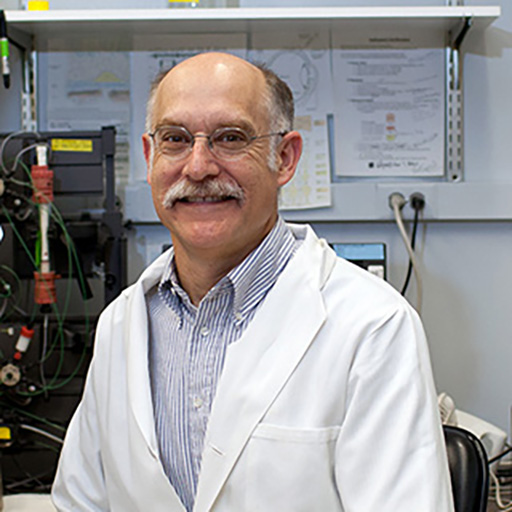
AlfredLewin
PhD
Location
Gainesville, FL, USA
Current Organization
University of Florida
Biography
Alfred Lewin, PhD, is from Hammond, Indiana, where he was educated in the public schools. He attended the University of Chicago both for college and for graduate school, receiving a PhD in Biology in 1978. His research focus was on the basic molecular biology of mitochondria. Dr. Lewin moved to Basel, Switzerland from 1978-1981, where he studied the importation of proteins into mitochondria. He continued these investigations at Indiana University in Bloomington, where he was an assistant professor of chemistry. During this period, his lab turned to the study of catalytic RNA encoded by mitochondrial DNA. In 1987, Dr. Lewin moved to the University of Florida College of Medicine, continuing his studies of RNA enzymes. In the early 1990s, Dr. Lewin decided to put catalytic RNAs to work for human health, by designing small RNA enzymes, ribozymes, for the treatment of autosomal dominant forms of retinitis pigmentosa (RP). The strategy was to degrade the mRNA for mutant rhodopsin and to replace it with a normal form. These experiments were done in collaboration with William Hauswirth, PhD, and John Flannery, PhD, pioneers in retinal gene therapy, and Matthew LaVail, PhD, an expert on models of RP.
While his research on RP continues vigorously and is moving from rodents to larger animals, Dr. Lewin’s group has recently turned its attention to AMD, using both gene therapy and pharmacological approaches. Gene therapy is designed to block inflammation which is the hallmark of the late stages of AMD. Drug therapy is intended to block oxidative stress that leads to inflammation. These experiments are conducted first in cell culture and then in rodent models, but the goal is to develop treatments that are readily translatable to the treatment of human patients.
“Lucky coincidences sometimes drive scientific decisions. If I did not have the lab across the hall from Bill Hauswirth, I would not have seen his poster describing successful gene transfer to the retina. If a clever MD-PhD student, Kimberly Drenser, hadn’t joined my group I might not have helped her find clinically relevant research projects. If a research scientist, Xiaoping Qi, MD, hadn’t accidentally misplaced a needle, we might not have developed a mouse model of dry AMD when we intended to study optic neuropathy. These accidents all worked together to help us develop a mouse model of early AMD in which to test the drug therapy that is the subject of this project. One additional component was when our collaborator in medicinal chemistry, Hendrik Leusch, PhD, asked us to test a series of compounds he had discovered as natural products in seaweed to see if any had antioxidant properties in mice. One of his compounds turned out to be quite potent, and that is what we are testing in our mouse model of AMD.”
Grants
Grants Featuring
Alfred Lewin, PhD
Macular Degeneration Research
A Novel Antioxidant Therapy for Retinal Degeneration
Active Dates
July 01, 2015 - June 30, 2017

Principal Investigator
Alfred Lewin, PhD
A Novel Antioxidant Therapy for Retinal Degeneration
Active Dates
July 01, 2015 - June 30, 2017

Principal Investigator
Alfred Lewin, PhD
Macular Degeneration Research
Treatment of Retinal Degeneration in a Mouse Model for Dry AMD
Active Dates
July 01, 2012 - June 30, 2015

Principal Investigator
Alfred Lewin, PhD
Treatment of Retinal Degeneration in a Mouse Model for Dry AMD
Active Dates
July 01, 2012 - June 30, 2015

Principal Investigator
Alfred Lewin, PhD



